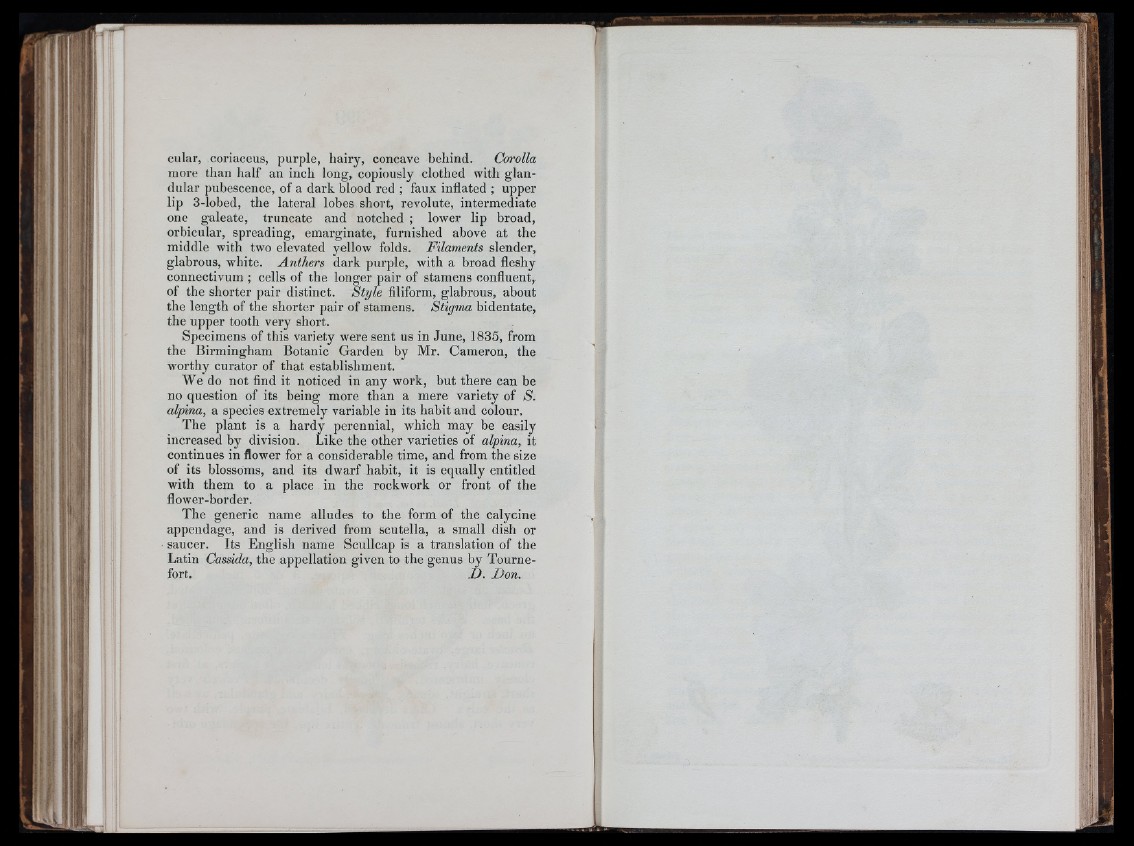
ciliar, coriaceus, purple, hairy, concave behind. Corolla
more than half an inch long, copiously clothed with glandular
pubescence, of a dark blood red ; faux inflated ; upper
lip 3-lobed, the lateral lobes short, revolute, intermediate
one galeate, truncate and notched ; lower lip broad,
orbicular, spreading, emarginate, furnished above at the
middle with two elevated yellow folds. Filaments slender,
glabrous, white. Anthers dark purple, with a broad fleshy
connectivum ; cells of the longer pair of stamens confluent,
of the shorter pair distinct. Style filiform, glabrous, about
the length of the shorter pair of stamens. Stigma hidentate,
the upper tooth very short.
Specimens of this variety were sent us in June, 1835, from
the Birmingham Botanic Garden by Mr. Cameron, the
worthy curator of that establishment.
We do not find it noticed in any work, but there can be
no question of its being more than a mere variety of S.
alpina, a species extremely variable in its habit and colour.
The plant is a hardy perennial, which may be easily
increased by division. Like the other varieties of alpina, it
continues in flower for a considerable time, and from the size
of its blossoms, and its dwarf habit, it is equally entitled
with them to a place in the rockwork or front of the
flower-border.
The generic name alludes to the form of the calycine
appendage, and is derived from scutella, a small dish or
saucer. Its English name Scullcap is a translation of the
Latin Cassida, the appellation given to the genus by Tournefort.
I ) . Don.